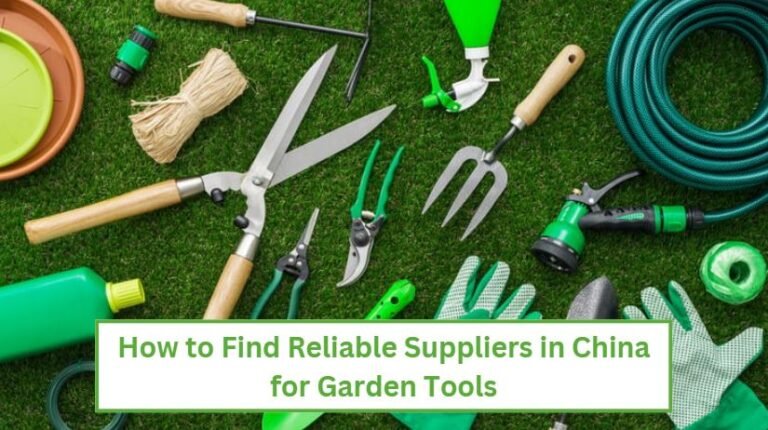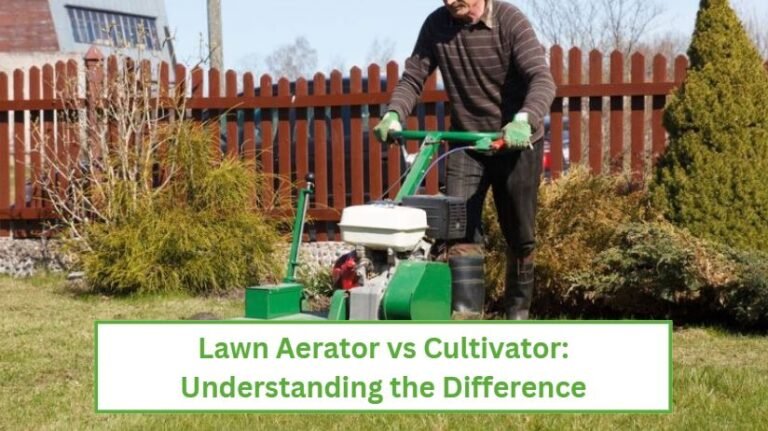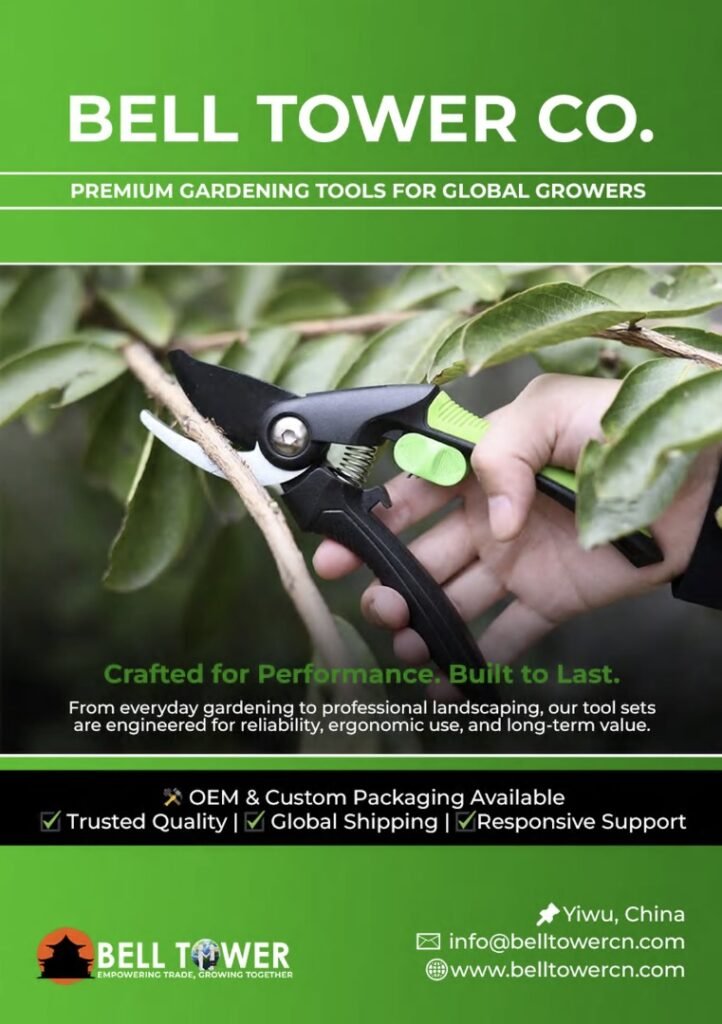If you want to keep your lawn healthy, or maybe help your customers do that, it’s not just about mowing and watering.
You could mow and water perfectly, but a lawn can still look weak and patchy. The secret to a healthy lawn? Strengthen its roots! Lawn aerators and scarifiers are two of the most important tools that can help you do that.
Both have different functions, so in this post, we’ll dive into their pros and cons, which one you should use, when you need both, and answer a few important questions related to them.
Let’s dive in.
What Is a Lawn Aerator?
The gardening tool is designed to relieve soil compaction. Over time, a patch of soil can get dense as a result of foot traffic, kids playing, and even heavy rainfall.
This compacted soil prevents nutrients, water, and sunlight from reaching the roots, which is where a lawn aerator comes in. It simply creates holes in the ground, creating paths for water, nutrients, and air to reach the grassroots.
There are mainly two types of law aerators out there:
- Spike aerators: These use solid spikes to push holes into the soil
- Core or plug aerators: These remove small plugs of soil, leaving deeper holes
The goal of using a lawn aerator is simple: Open up the soil so roots can breathe better and grow stronger.
Here’s a deeper dive into the differences between a spike and plug aerator.
Pros of Using a Lawn Aerator
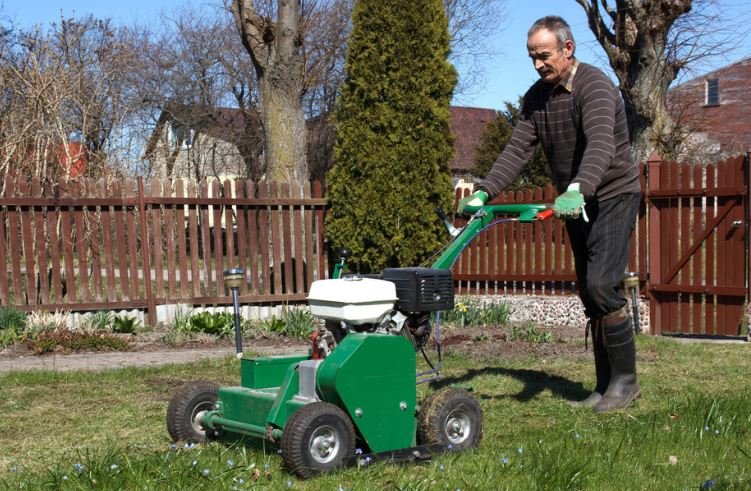
Let’s briefly talk about the benefits of using a lawn aerator. You can use these benefits on your product pages if you’re going to resell them to your customers:
- Improves air, water, and nutrient flow directly to the roots
- Helps grass grow thicker and more resilient
- Relieves problems caused by heavy clay soil or compacted areas
- Encourages deeper root systems, which means better drought resistance
If you’re considering getting a lawn aerator for your lawn (Or to stock), here’s a recommended one:
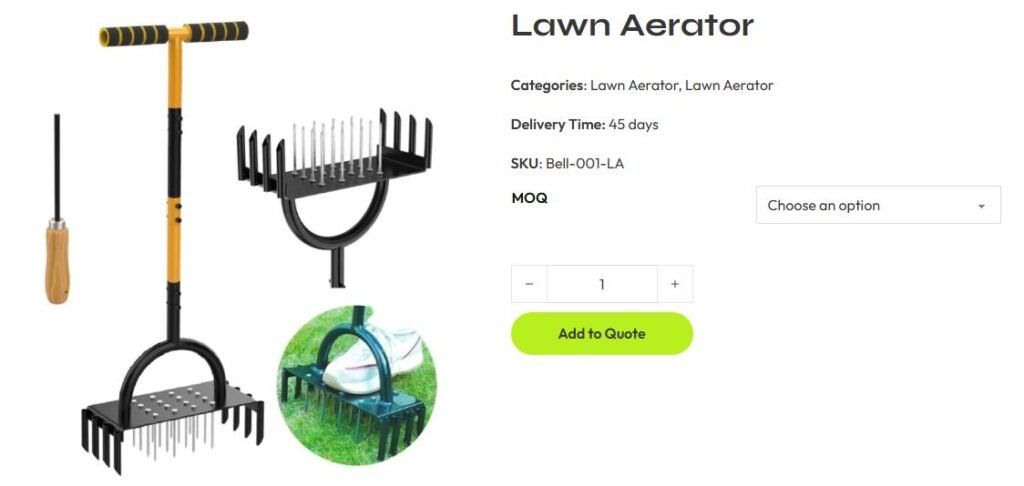
Cons of Using a Lawn Aerator
Let’s not forget the downsides of this tool. Knowing these will help you get the most out of lawn aerators (Or help your customers get the most out of their lawn):
- Doesn’t give instant “green-up” results; the improvements are gradual
- Requires the right timing (spring or fall is best)
- Core aerators can be pricey or bulky, meaning rentals are often needed
What Is a Lawn Scarifier?
A lawn scarifier is like a powerful rake with blades; its primary job is to clean up the surface of your lawn.
Over time, grass collects thatch (a dense layer of dead grass, roots, and debris) and moss. This layer suffocates your lawn and blocks water, nutrients, and air from reaching the soil.
Using a scarifier, you can easily dig into a lawn’s surface, pull out thatch and moss to clear the path for new grass growth.
Common types of scarifiers include:
- Hand scarifiers: Manual, great for small lawns
- Electric scarifiers: Faster, more effective, and ideal for medium-to-large lawns
Pros of Using a Lawn Scarifier
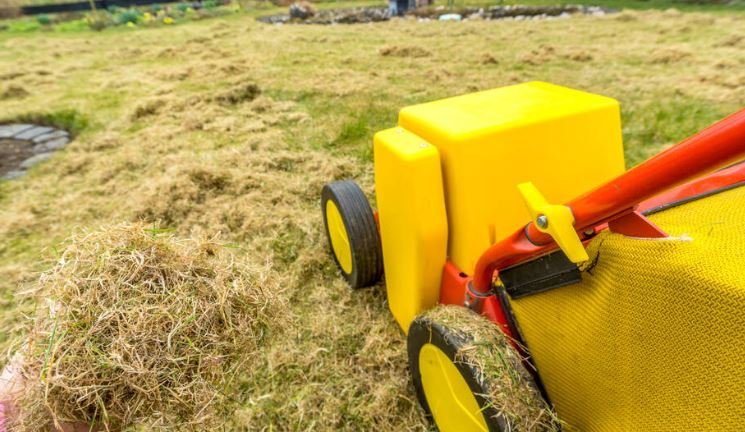
Here’s a quick overview of the benefits you get by using a scarifier:
- Removes moss, weeds, and thatch that choke your lawn
- Helps grass seeds establish more easily
- Improves lawn appearance over time
- Creates healthier surface soil for future growth
Cons of Using a Lawn Scarifier
Here are some potential drawbacks of a scarifier you should be aware of:
- Scarifying may leave bare patches on your lawn, so it may look worse before it starts to look better
- Often requires reseeding afterward
- Works best during certain times of the year (spring or early autumn)
Key Differences Between Lawn Aeration and Scarifying
Let’s quickly uncover the main differences between the two handy gardening tools (Lawn aerators vs. scarifiers):
- Aeration: Focuses on the soil. It fixes compaction and lets more air, nutrients, and fertilizer in
- Scarifying: Focuses on the surface. It removes thatch and moss so nutrients, fertilizer, and air can easily get in
- Results: Aeration shows benefits over time, while scarifying often has dramatic short-term results
- Timing: Aeration is best when the soil is compacted; scarifying is best when moss and thatch buildup are visible
When to Use a Lawn Aerator
Here are the signs that tell you it’s time for aeration:
- Water starts to pool on the surface instead of draining
- Thin grass growth
- Hard, compacted soil
The best time for aeration? Spring or fall, when the soil is moist but not soggy.
Aeration is especially useful for:
- Lawns with heavy foot traffic
- Clay-based soils
- Landscaping businesses that are maintaining high-use areas like parks, sports fields, or public lawns
When to Use a Lawn Scarifier
Scarifying is needed when you see:
- Moss spreading across the lawn
- Thatch buildup thicker than about 1 cm
- Grass looking dull, weak, or patchy
The best time for using a scarifier? Early spring or early autumn, when the grass can recover quickly.
Scarifying is especially helpful for:
- Older lawns with poor upkeep
- Shaded or damp lawns that are prone to moss growth
- Professional landscapers who maintain lawns that need a quick refresh before a new season
Can You Use Both an Aerator and Scarifier?
Of course, yes. Both solve unique problems, but the goal is one: Helping your soil get more nutrients and fertilizer so it can grow healthier, thicker grass.
A smart lawn care schedule could look like this:
- Scarify first to clear out moss and thatch
- Aerate to loosen compacted soil and boost root health
- Reseed if needed to fill in bare spots
If you’re taking care of a home garden, once or twice a year is more than enough. For professional landscapers, the frequency depends more on the condition of the lawn.
Lawn Aerator Vs. Scarifier: Frequently Asked Questions
What Is the Difference Between Lawn Aeration and Scarifying?
Aeration loosens compacted soil, allowing air, water, nutrients, and fertilizers to reach the grassroots. Scarifying removes moss and thatch from the surface, allowing it to breathe better.
Is It Better to Scarify or Aerate Your Lawn?
It depends on the problem; scarifying removes thatch and moss on the surface, while aeration relieves compacted soil. Your lawn could benefit from both; use a scarifier to clean the surface and an aerator to loosen the soil.
Is a Lawn Scarifier the Same as an Aerator?
No, a scarifier removes thatch and moss from the surface; an aerator loosens the soil beneath the surface. Although both address different issues, they complement each other to strengthen the roots.
What are the Signs Your Lawn Needs Scarifying?
If you see moss patches, thick thatch buildup over 1 cm on your lawn’s surface, and poor water penetration, it’s time to grab your scarifier. The tool clears debris, letting grass breathe and thrive.
Scarifier Vs. Lawn Aerator: Conclusion
Here’s the bottom line:
- Use an aerator if your soil is too dense or compacted to let water and nutrients reach the roots
- Use a scarifier if your lawn has too much moss or thatch
- Use both for a complete lawn care strategy if your lawn shows multiple issues
For homeowners, this means healthier, greener lawns. For retailers and wholesalers, these tools are not just “Great-to-have”; they’re about having the right gardening tools ready to ship when your customers need them. For landscaping businesses, it’s about delivering visible, lasting results for clients.
Learn more: Lawn Aerator Vs. Dethatcher (The Differences and How to Choose the Right One)

